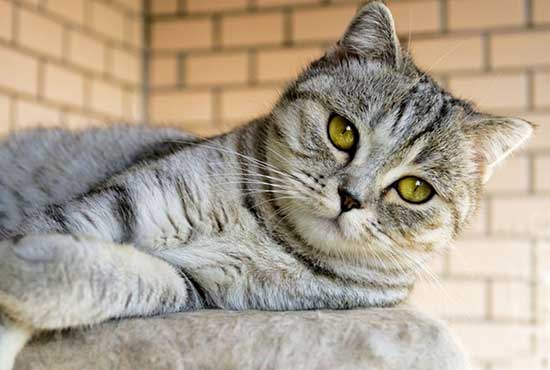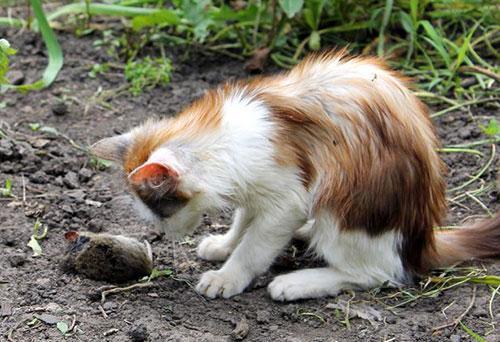This content is archived from the Feline Nutrition Foundation
'Natural' vs. 'Grain-Free' Cat Food
- Updated: Wednesday, April 24, 2019 03:04 PM
- Published: Saturday, June 20, 2015 03:15 PM
- Written by Lyn Thomson, BVSc DipHom
 The natural pet food sector has been recognised as a rapidly growing category of pet food. With grain-free products continuing to drive the natural category, it is worth examining the terms "natural" and "grain-free" in relation to our cats' diets.¹
The natural pet food sector has been recognised as a rapidly growing category of pet food. With grain-free products continuing to drive the natural category, it is worth examining the terms "natural" and "grain-free" in relation to our cats' diets.¹
The term "natural" has been defined by the Association of American Feed Control Officials, known as AAFCO, and requires, at minimum, that the pet food be preserved with natural preservatives. And that's it – no further definition. However, the purchaser's perception of natural focuses not only on the exclusion of preservatives, but also on the inclusion of whole ingredients, meats, fruits and vegetables, avoiding refined grains and by-products and feeding according to ancestral or instinctual nutritional philosophies.² Natural also implies no nasty additives; but, this is not included in the AAFCO definition.
The term "grains" refers to cereal grains. Wheat is one of the most consumed cereal grains worldwide and makes up a substantial part of the human diet. Cereal grains contain anti-nutrients such as wheat gluten and wheat lectin and can contribute to the manifestation of chronic inflammation and auto-immune diseases by increasing intestinal permeability and initiating a pro-inflammatory immune response.³
Natural and grain-free are meaningless terms when it comes to choosing the right food for your cat. Cats are obligate carnivores. Their feral or natural diet consists of small mammals such as mice, rats, or rabbits, birds, fish, reptiles, and invertebrates with a macronutrient profile of 52% metabolisable energy, or ME, from protein, 46% ME from fat and 2% ME from carbohydrate.⁴ As only 2% of the ME comes from carbohydrates, there is no requirement for carbohydrates from grains or starches. The 2% of carbohydrates in the diet will be provided naturally by the carcass. The carcass composition is water, fat, protein, minerals and a small proportion of carbohydrates.
 So the clever marketing of pet food is driving a surge of interest in the natural and grain-free category. Holistic veterinarians are often discussing diet in relation to gastro-intestinal health. Holistic vets recognise the importance of eating as closely as possible to the cat's ancestral diet for optimal gut health. The pet food manufacturing companies are trying their hardest to capture the holistic market and get close to the ancestral diet of our feline friends by offering "natural" and "grain-free" alternatives. Sounds great, but the reality is – buyer beware. Natural products, by definition, can contain anything except an unnatural preservative.
So the clever marketing of pet food is driving a surge of interest in the natural and grain-free category. Holistic veterinarians are often discussing diet in relation to gastro-intestinal health. Holistic vets recognise the importance of eating as closely as possible to the cat's ancestral diet for optimal gut health. The pet food manufacturing companies are trying their hardest to capture the holistic market and get close to the ancestral diet of our feline friends by offering "natural" and "grain-free" alternatives. Sounds great, but the reality is – buyer beware. Natural products, by definition, can contain anything except an unnatural preservative.
Grain-free products have replaced grains with other inappropriate carbohydrates. Check the ingredient list for: ground brown rice, oatmeal, dried beet pulp, red lentils, green lentils, quinoa, green peas, pumpkin, butternut squash, carrots, apples or pears. All are inappropriate and potentially harmful to our cats.
As our knowledge of gastrointestinal permeability increases, we begin to understand the importance of the diet and the microbiome and how these two factors interplay in the health of our cats. Holistic and integrative veterinarians often use the terms "leaky gut" and "dysbiosis." These terms are not currently acknowledged by the conventional veterinary community but, due to the work of the Italian paediatrician Dr Alessio Fasano, the term leaky gut has been recognised by mainstream medical practitioners.⁵ Dr Fasano recognises the importance of a leaky gut in the development of auto-immune disease. Both animal models and recent clinical evidence support this new paradigm and provide the rationale for innovative approaches to prevent and treat auto-immune disease with diet. There is also ground-breaking research into the importance of the gut microbiome and the clinical significance of a dysbiosis and the effect of diet on the microbiome.⁶
Additional Reading
Answers: Who Are AAFCO and the NRC?
The current challenge is to educate cat owners about appropriate species-specific food choices for their cats and to match consumer demand with appropriate products devoid of confusing and meaningless marketing terms. A further challenge is to meet the high demand for protein in a sustainable and affordable manner.
Dr. Lyn Thomson trained at the University of Bristol in England and is studying with the Australasian College of Nutritional and Environmental Medicine. A dedicated and experienced advocate of bio-appropriate nutrition, Lyn practices in Auckland, New Zealand. HerRaw Essentialsstores have grown to eight retail locations, providing a variety of raw diet products for cats and dogs.
1. "The Next Big Thing, Based on Sales Trends in Pet Retail Specialty," Pet Food Forum Report, April 2015.
2. PR Buff, RA Carter, JE Bauer and JH Kersey, "Natural Pet Food: A Review of Natural Diets and Their Impact on Canine and Feline Physiology," Journal of Animal Science 92, no. 9, Feb 27, 2014, 3781-3791.
3. K de Punder and L Pruimboom, "The Dietary Intake of Wheat and Other Cereal Grains and Their Role in Inflammation," Nutrients 5, no. 3, March 2013, 771-787.
4. EA Plantinga, G Bosch and WH Hendriks, "Estimation of the Dietary Nutrient Profile of Free-roaming Feral Cats: Possible Implications for Nutrition of Domestic Cats," The British Journal of Nutrition106, Supplement 1, Oct 2011, S35-48.
5. A Fasano, "Leaky Gut and Autoimmune Diseases," Clinical Reviews in Allergy and Immunology 42, no. 1, Feb 2012,71-78.
6. JS Suchodolski, "Microbes and Gastrointestinal Health of Dogs and Cats," Journal of Animal Science89, no. 5, July 29, 2010, 1520-1530.




